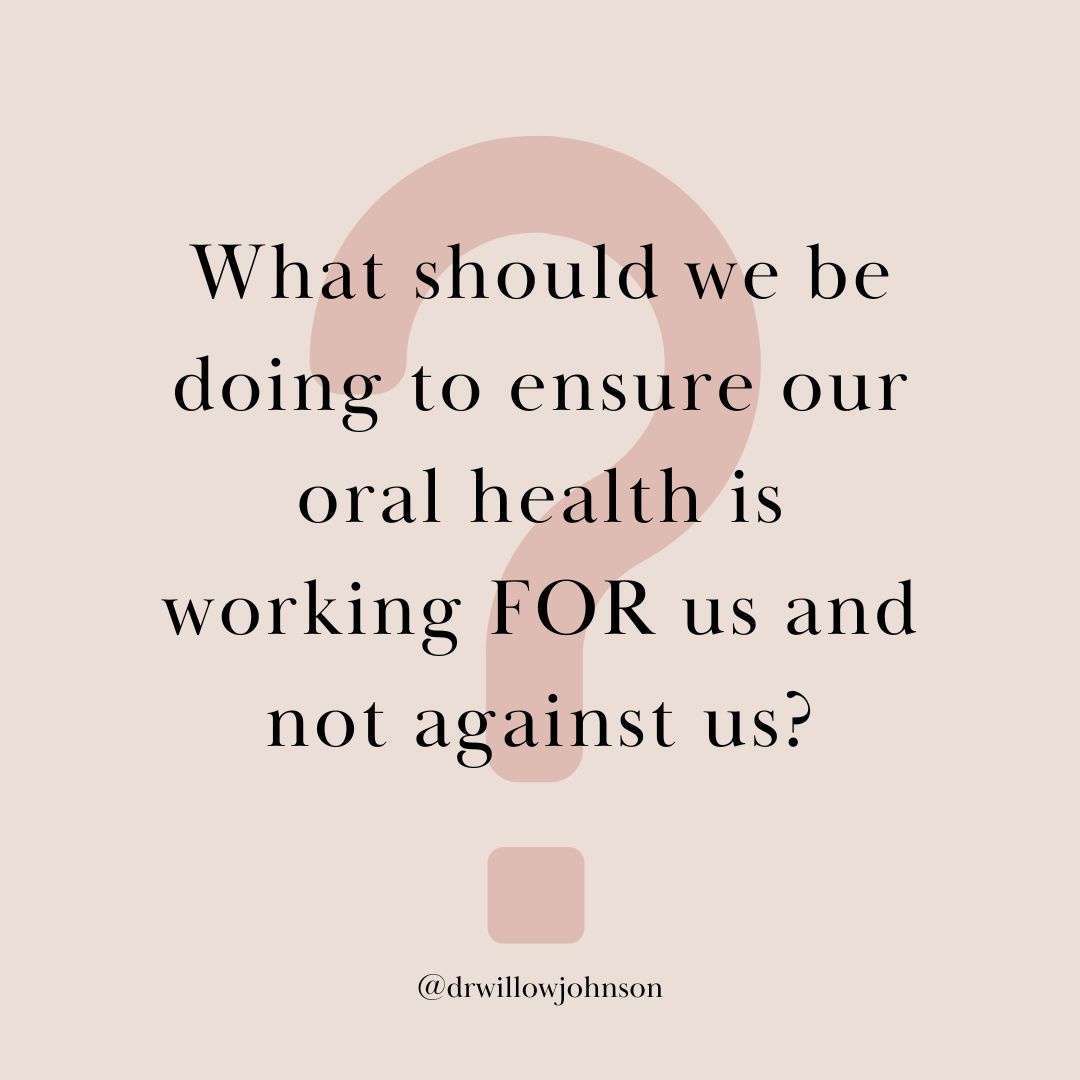HOME
MY STORY
SERVICES
ARTICLES
PRODUCTS
CONTACT
BOOK NOW
SERVICE OVERVIEW
GROUP PROGRAMS
ACUPUNCTURE
LABS
PRESCRIPTIONS
FAQs
If you missed my email & blog from last week on why you should care about your oral health in a BIG way, check it out here.
So, what should we be doing to ensure our oral health is working FOR us and not against us (reminder: it may be a modifiable risk factor – as in within your control to change – for conditions like depression, heart disease, Diabetes, Alzheimer’s, negative pregnancy outcomes, and more).
To take better care of your oral health, consider the following routines:
- Keep up regular visits with your 👩🏽⚕️ dentist. Seriously. Do it. Twice yearly is the ideal recommendation but if you don’t have coverage and cost is a factor, try not to go longer than 1 year. Prevention is always the best approach and your dentist can identify an issue before it progresses.
- Floss 🧵 daily (this is a must!) to remove plaque and food particles from between your teeth. Fun fact: did you know that flossing BEFORE you brush is more beneficial than flossing after you brush? (I learnt this tid-bit from Dr. Ashley @drashleytop).
- Brush your teeth 🦷 at least twice a day. After each meal is best (same with flossing). Reminder: change your toothbrush/head every 3 months (and after you’ve been sick!). Worn out bristles aren’t as effective. Bonus note: this is a debate that I am not going to get into today but for those of you concerned with using fluoride toothpaste, consider the following alternative: hydroxyapatite toothpaste.
- Spit 😛, don’t rinse. Did you know that if you rinse your mouth right after brushing, you’re actually washing away the toothpaste before it gets a chance to do its thing? To get the most out of your toothpaste, it’s best to leave it on your teeth for at least 15-30 minutes (I also learnt this tip from Dr. Ashley!).
- Water 💦 flossing. Ideally this is an add-on and not a replacement to your regular string floss. The string floss can remove larger debris, while water flossing removes fine particles and bacteria. However, if string flossing is challenging for various reasons (orthodontics, dexterity issues, or you plain hate string flossing), water flossing is an alternative to traditional string flossing. PS – I may have gotten a water flosser for mother’s day and it is awesome!
- Tongue 👅 scraping. The tongue’s surface can be a reservoir of bad bacteria, food particles, and dead cells. Remember that bacteria can spread from your mouth to other body systems (e.g. your gut) and have much wider health implications than bad breath! So while studies show that tongue scrapers are more effective for reducing bad breath than using your toothbrush to scrape your tongue, keep in mind you are likely having much larger health impacts with this practice than improving bad breath. Scrape 1-2x/day.
Ok, so I’m going to cut myself off there 😅.
^These are foundational routines to get in place.
Next week I’m going to dive into more of the “Naturopathic” stuff – think nutrition, key nutrients, what to eat, supplementation, our microbiome and probiotics, mouth breathing, oil pulling, and more!
- Dr. Willow
Leave a Reply
WILLOW
meet
I help women achieve optimal digestive and hormonal wellness through a root cause, individualized approach to medicine that utilizes functional lab testing, diet and lifestyle modification, nutritional and herbal medicine, and acupuncture to re-establish lasting health.
LEARN MORE
The Wild Collective: my women's ♀️ group health program
Gut health program coming soon, stay tuned 👀!
join
THE COMMUNITY
I WANT IN!
Between my wait listed practice, building my Wild Collective communities, and being Mom, I don't email often, but I'm working behind the scenes to bring you major value and I'd love to be able to tell you about it when it is ready (along with some more personal shares).

Be the first to comment